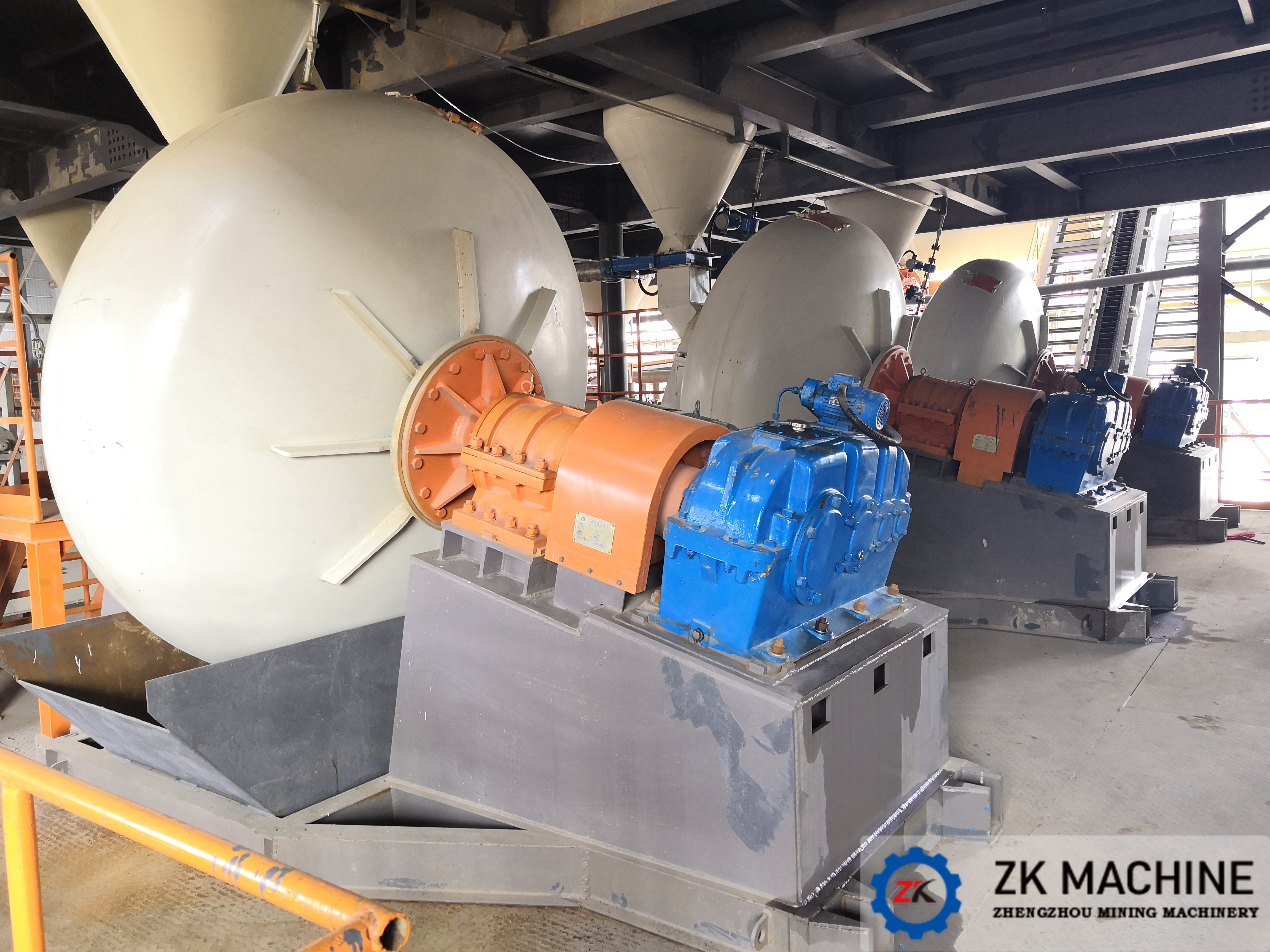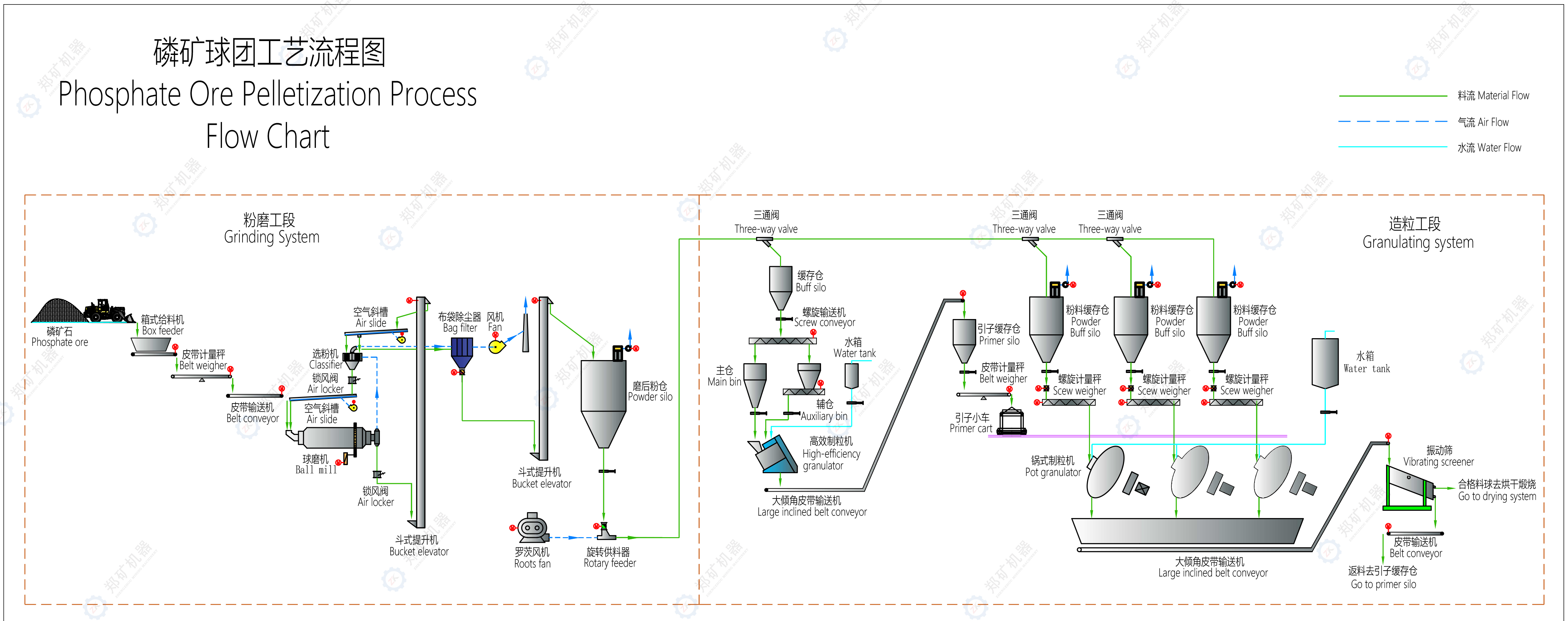The incoming phosphate ore powder (0~8mm) and phosphate concentrate powder are transported to the ball mill to 200~600 meshes by box feeder, belt scale and belt conveyor. Qualified fine powder is selected by powder selector and collected by bag dust collector. Qualified fine powder is sent to the powder bin after grinding by elevator for storage, and coarse powder is returned to the mill for re-grinding. The fine powder after grinding is sent to the ball making powder bin by pneumatic conveying device. First, it is made into primer by high-efficiency granulator. The primer is sent to the pot granulator by trolley. By replenishing powder and spraying water at the same time, the material balls gradually grow to the required particle size. The raw material balls pass through the vibrating screen, and the large balls are sent to the material ball drying system. The small balls under the screen are returned to the buffer bin as primers and re-enter the pot granulator for ball making. The material balls are dried in a tunnel kiln. The material balls are placed in the sagger. The loading and unloading vehicles of the sagger are automatically operated by robots. The drying heat source can be the yellow phosphorus tail gas generated by the electric furnace. The dried and cooled material balls are transported to the material yard by belt conveyor for storage and standby.
Technical features:
1. The pellets are of high strength, and no binder is involved in the pelletizing process. According to the project requirements, the pellet strength can reach 1000N~4000N, which can adapt to various complex yellow phosphorus production conditions and improve the safety and stability of yellow phosphorus electric furnace production;
2 .The pellets are spherical, with a conventional pellet diameter of 10~40mm (other sizes can also be met). One production line can produce pellets of different particle sizes, and does not rely on molds to change the pellet size, which is convenient for users to change the pellet size according to actual production conditions, so that the economic benefits of yellow phosphorus production can be optimized;
3. The drying and sintering process decomposes carbonates, further improves the ore grade of phosphate ore pellets, and reduces the electricity consumption cost of yellow phosphorus production;
4 .Whether to use a ball mill for grinding can be selected according to the particle size of the raw materials. The ground phosphate rock powder or phosphate concentrate has a more uniform mineral distribution after balling, which helps to improve the sufficiency of the reduction reaction in the yellow phosphorus electric furnace and improve labor efficiency;





















